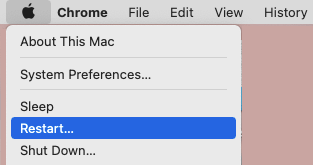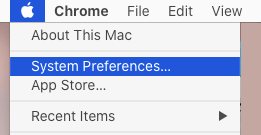Nothing can be more annoying than a slow and lagging mouse, especially when you are inspired to try out something new or working under pressure to meet a deadline.
The issue of a slow and lagging mouse on Mac could be due to a variety of reasons, ranging from weak batteries, faulty mouse and incorrect mouse settings to software related issues.
Fix Slow and Lagging Mouse on Mac
In most cases, the problem of slow or lagging mouse on Mac can be fixed by using the following troubleshooting steps.
1. Examine Mouse and Mouse Pad
Take a good look at the back of your Mouse and make sure that the laser opening is not blocked by dirt/debris.
Also, clean the Mouse Pad and make sure that it is not worn out or dirty and needs to be replaced.
2. Replace Batteries
A common reason for slow and lagging mouse on Mac is due to the Batteries losing their power and becoming weak.
To confirm, replace the battery on your Mouse with a New battery and see if it helps in fixing the problem.
3. Restart Mac
Sometimes, the problem is due to stuck programs or processes interfering with the functioning of Mouse on your Mac.
1. Click on Apple Logo in top-menu bar and select the Restart option in the dropdown menu.

2. Patiently wait for your Mac to completely Shut Down.
3. After 30 seconds Restart the Mac.
4. Unplug USB Connected Devices
In many cases, the problem of a mouse getting stuck, becoming slow or not working properly ends up being due to interference from USB 3.0 devices.
Hence, remove all USB connected devices from your Mac (except Mouse & Keyboard) > restart your computer and see if this improves the performance of your Mouse.
5. Change USB Port
Another common reason for the mouse not working properly is due to the USB Port on your Mac not playing well with the Mouse due to a technical glitch or a problem with the USB port.
To rule out this possibility, plug the Mouse into another USB Port and see if it starts working better. If you are using a USB Hub, remove the Mouse from USB Hub and plug it directly into the USB Port.
6. Disable Handoff Feature
Some users have reported fixing the problem of slow mouse by disabling the Handoff feature on Mac.
1. Click on Apple icon in top-menu bar and select System Preferences… or System Settings in the dropdown menu.

2. On the next screen, click on General and uncheck Allow handoff between this Mac and your iCloud devices option.

7. Disable Bluetooth
Sometimes, the problem of a laggy or slow mouse is due to interference from other Bluetooth devices that are close to Mac.
1. Click on Bluetooth icon located at the top-right corner and Turn OFF Bluetooth.

2. After disabling Bluetooth, disconnect the Mouse from your Mac.
3. Wait for 30 seconds and connect the Mouse back to your Mac.
If it is a plug-and-play mouse, it should work without Bluetooth. You can enable Bluetooth Back on your Mac, after the Mouse starts working properly.
8. Adjust Tracking & Scrolling Speed
If you find that the cursor is dragging or moving slowly, it is likely that the tracking speed of mouse has been set to a low value.
1. Click on Apple icon in top-menu bar and select System Preferences… or System Settings in the dropdown menu.

2. On the next screen, click on the Mouse icon > on the next screen, adjust Tracking and Scrolling Speed by moving the slider to right.
![]()
The change takes effect immediately, start using your Mouse and see if it feels faster than it was before.
9. Is Your Mouse Defective?
Plug another Wireless/Bluetooth Mouse into your Mac and see if the New Mouse works perfectly fine on your Mac.
Now, plug the Slow Mouse into another computer (Windows PC) and see if it is working. If the Mouse is not working on another computer, it confirms that the Mouse is defective.
If you recently bought the mouse, return or exchange it as soon as possible.
10. Reset NVRAM
NVRAM which stands for Non-Volatile Random-Access Memory stores settings of the keyboard, the mouse and all other external devices connected to your MacBook.
Hence, there is always the possibility of the slow mouse on your MacBook being due the NVRAM being corrupted.
Luckily, it is not difficult to Reset the NVRAM on your MacBook and this can be done by using steps as provided in this guide: How to Reset NVRAM or PRAM on Mac.